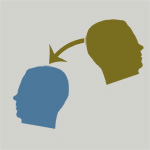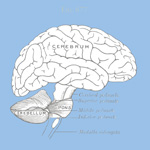 We are strongly motivated to promote the interests of anyone for whom we feel self-concern. We are moved to prevent that person’s suffering, to work towards his or her well-being. Motivation seems part of self-concern’s essential core.
We are strongly motivated to promote the interests of anyone for whom we feel self-concern. We are moved to prevent that person’s suffering, to work towards his or her well-being. Motivation seems part of self-concern’s essential core.
A focus on motivation suggests that self-concern is primarily future-directed. We know we cannot change the past, and do not normally try. But of course, our attitudes towards the past, as well as the future, are infected with self-concern. Most events I remember in my own past are coloured by pride or shame, personal joy or pain. Most of my memories of my own life have associated emotions which are qualitatively distinct from my memories of other people’s lives, and of events to which I had no personal connection.
Our mental models of reality include both past and future. We imagine both (not always accurately). But the imagined past is labelled, in our models, as fixed, beyond help. The imagined future (and there are many) is flagged as possible. The past is manifest, fixed, immutable. The future is unmanifest, mutable, a realm of possibilities not actualities. The ‘flow of time’ might be described as the production of the actual from the possible. Continue reading “Self-Concern as Motive”





